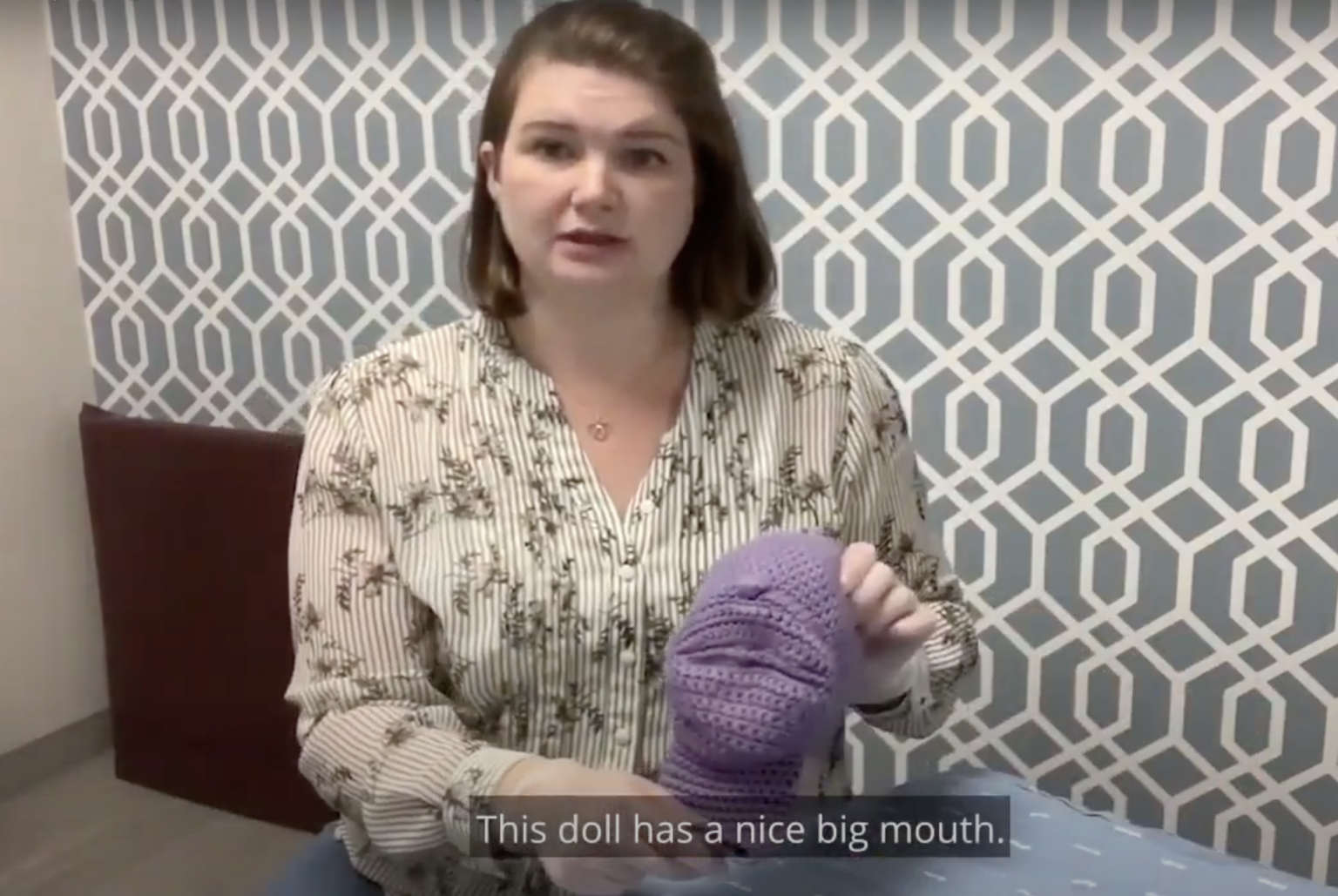Hi, my name is Beth McKenzie. I’m an International Board Certified Lactation Consultant and I see clients in the clinic at Oona Toronto. I also see clients in their homes in the West End of Toronto.
Today, I’m going to talk to you about engorgement. Engorgement is very common in the first few days after the baby is born. And what it feels like usually is breast fullness and hardness. It can sometimes be uncomfortable and it can sometimes be very difficult to latch the baby and to remove milk. So we’re going to talk about ways to manage engorgement and how to help remove your milk more efficiently to prevent things like blocked ducts and mastitis.
So, here you have your breast, your nipple, your areola, and your breast tissue. A baby needs to latch deeply to be able to remove milk efficiently. In order to latch deeply, the baby needs to have a good portion of your areola as well as your nipple in their mouth. Sometimes with engorgement, your areola becomes very firm and hard and it’s difficult for the baby to get a nice deep latch. They end up suckling on your nipple which is painful and doesn’t remove milk efficiently.
One thing you can do to help soften your areola is called reverse pressure softening. And to do that, you place your fingers on either side of your areola beside your nipple and you gently and firmly push backwards towards your chest wall. You’ll want to move your fingers all the way around your areola to temporarily soften your areola to help the baby get a nice deep latch and to help you remove all that milk that you’re making. Another thing you can do to remove milk is called hand expression.
To do hand expression, you form your hand into the shape of a C, and you place your fingers on either side of your areola. And then to start, what you want to do is push backwards towards your chest wall and compress your fingers together and then release, push backwards towards your chest wall, compress, release, push backwards, compress, release. You can move your hand all the way around your breast or you can just stay in one spot. Hand expression is a really great way to help remove milk in between feedings if your baby is not able to drain your breast at a feeding and you’re finding you’re feeling very uncomfortable in between feedings and you need to relieve some of that pressure.
One thing that can help before you remove milk, so either before hand expression, before pumping, or before feeding the baby is a little bit of moist heat over your breast, and that would be over your entire breast. So either a warm washcloth or a diaper soaked in warm water just to help remove the milk. Or, another strategy is going into the shower and trying some of that hand expression in the shower to help soften up your breasts a little bit. Now, sometimes with engorgement, the swelling is so severe that it’s actually very difficult to remove milk. And then what you want to think about is strategies to help reduce swelling. So one simple thing you can do is to apply ice or cold compresses to your breasts in between removing milk, so in between feeding the baby, or in between some hand expression, or in between pumping. You can also take Advil or ibuprofen. It’s an over the counter nonsteroidal anti-inflammatory medication and it will also help reduce pain for you. Make sure you follow the directions on the package. You can also take Tylenol if you’re finding your breasts are very sore and uncomfortable.
In all of these cases, with all of these strategies, if you’re finding nothing is really helping, one other strategy you can use is called therapeutic ultrasound. And what that will do is help reduce the swelling so that your milk is able to be removed more easily. We do have practitioners at Oona who practice therapeutic ultrasound, so if you think that is something that would be beneficial for you, please contact our front desk and ask them about it. In all of these cases, if you’re finding your engorgement is not improving or becoming worse after about 24 to 48 hours of treatment, I would encourage you to book an appointment with a lactation consultant to get a full assessment and to have a look at your latch, have a look in the baby’s mouth and just make sure there’s nothing else going on.
Okay, that’s it for today. I hope this was helpful and we will talk to you again soon. Take care.






